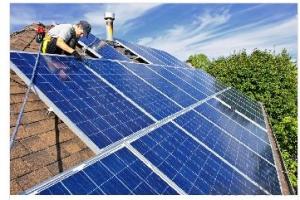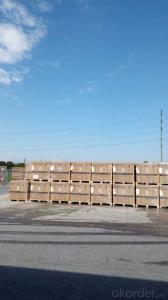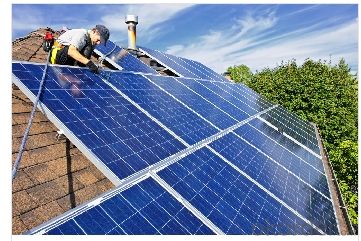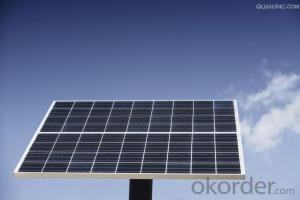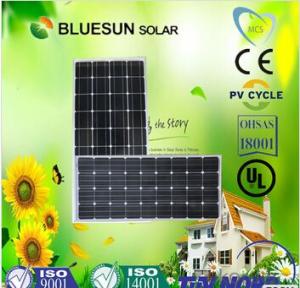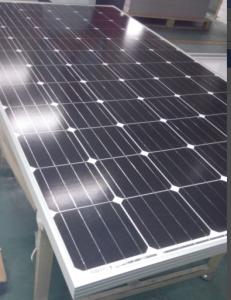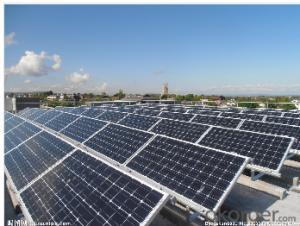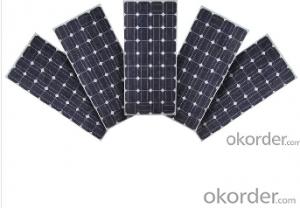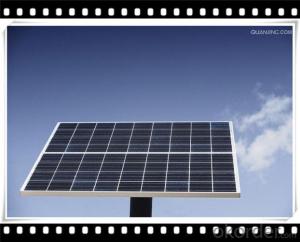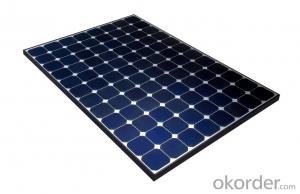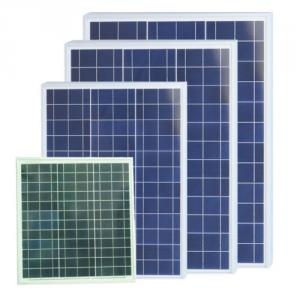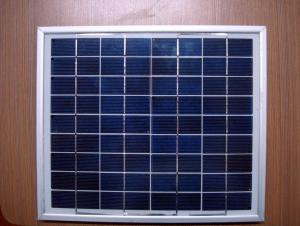Solar Panels in New York - CNBM Solar Panel Solar Module
- Loading Port:
- Shanghai
- Payment Terms:
- TT or LC
- Min Order Qty:
- 1 PCS
- Supply Capability:
- 100000 PCS/month
OKorder Service Pledge
OKorder Financial Service
You Might Also Like
PERFORMANCE
- High effi ciency, multicrystalline silicon solar cells with high transmission
and textured glass deliver a module effi ciency of up to 16.0%,
minimizing installation costs and maximizing the kWh output of your
system per unit area.
- Tight positive power tolerance of 0W to +5W ensures you receive
modules at or above nameplate power and contributes to minimizing
module mismatch losses leading to improved system yield.
- Top ranking in the “TÜV Rheinland Energy Yield Test” and the
“PHOTON Test” demonstrates high performance and annual energy
production.
RELIABILITY
- Tests by independent laboratories prove that Yingli Solar modules:
Fully conform to certifi cation and regulatory standards.
Withstand wind loads of up to 2.4kPa and snow loads of up to
5.4kPa, confi rming mechanical stability.
Successfully endure ammonia and salt-mist exposure at the highest
severity level, ensuring their performance in adverse conditions.
- Manufacturing facility certifi ed by TÜV Rheinland to ISO 9001:2008,
ISO 14001:2004 and BS OHSAS 18001:2007.
WARRANTIES
- 10-year limited product warranty1.
- Limited power warranty1: 10 years at 91.2% of the minimal rated power
output, 25 years at 80.7% of the minimal rated power output.
1In compliance with our Warranty Terms and Conditions.
QUALIFICATIONS & CERTIFICATES
IEC 61215, IEC 61730, MCS, CE, ISO 9001:2008, ISO 14001:2004, BS OHSAS
18001:2007, PV Cycle, SA 8000
ELECTRICAL PERFORMANCE
Electrical parameters at Standard Test Conditions (STC)
Module type YLxxxP-29b (xxx=Pmax)
Power output Pmax W 260 255 250 245 240
Power output tolerances ΔPmax W 0 / + 5
Module effi ciency ηm % 16.0 15.7 15.4 15.1 14.8
Voltage at Pmax Vmpp V 30.3 30.0 29.8 29.6 29.3
Current at Pmax Impp A 8.59 8.49 8.39 8.28 8.18
Open-circuit voltage Voc V 37.7 37.7 37.6 37.5 37.5
Short-circuit current Isc A 9.09 9.01 8.92 8.83 8.75
Electrical parameters at Nominal Operating Cell Temperature (NOCT)
Power output Pmax W 189.7 186.0 182.4 178.7 175.1
Voltage at Pmax Vmpp V 27.6 27.4 27.2 27.0 26.8
Current at Pmax Impp A 6.87 6.79 6.71 6.62 6.54
Open-circuit voltage Voc V 34.8 34.8 34.7 34.6 34.6
Short-circuit current Isc A 7.35 7.28 7.21 7.14 7.07
STC: 1000W/m2 irradiance, 25°C cell temperature, AM1.5g spectrum according to EN 60904-3.
Average relative effi ciency reduction of 3.3% at 200W/m2 according to EN 60904-1.
NOCT: open-circuit module operation temperature at 800W/m2 irradiance, 20°C ambient temperature, 1m/s wind speed.
OPERATING CONDITIONS
Max. system voltage 1000VDC
Max. series fuse rating 15A
Limiting reverse current 15A
Operating temperature range -40°C to 85°C
Max. static load, front (e.g., snow) 5400Pa
Max. static load, back (e.g., wind) 2400Pa
Max. hailstone impact (diameter / velocity) 25mm / 23m/s
CONSTRUCTION MATERIALS
Front cover (material / thickness) low-iron tempered glass / 3.2mm
Cell (quantity / material / dimensions /
number of busbars)
60 / multicrystalline silicon / 156mm x 156mm / 2 or 3
Encapsulant (material) ethylene vinyl acetate (EVA)
Frame (material / color / anodization color /
edge sealing) anodized aluminum alloy / silver / clear / silicone or tape
Junction box (protection degree) ≥ IP65
Cable (length / cross-sectional area) 1000mm / 4mm2
Plug connector
(type / protection degree) MC4 / IP67 or YT08-1 / IP67 or Amphenol H4 / IP68
PACKAGING SPECIFICATIONS
Number of modules per pallet 29
Number of pallets per 40' container 28
Packaging box dimensions
(L / W / H) 1700mm / 1135mm / 1165mm
Box weight 568kg
Unit: mm
• Due to continuous innovation, research and product improvement, the specifi cations in this product information sheet are subject to change
without prior notice. The specifi cations may deviate slightly and are not guaranteed.
• The data do not refer to a single module and they are not part of the offer, they only serve for comparison to different module types
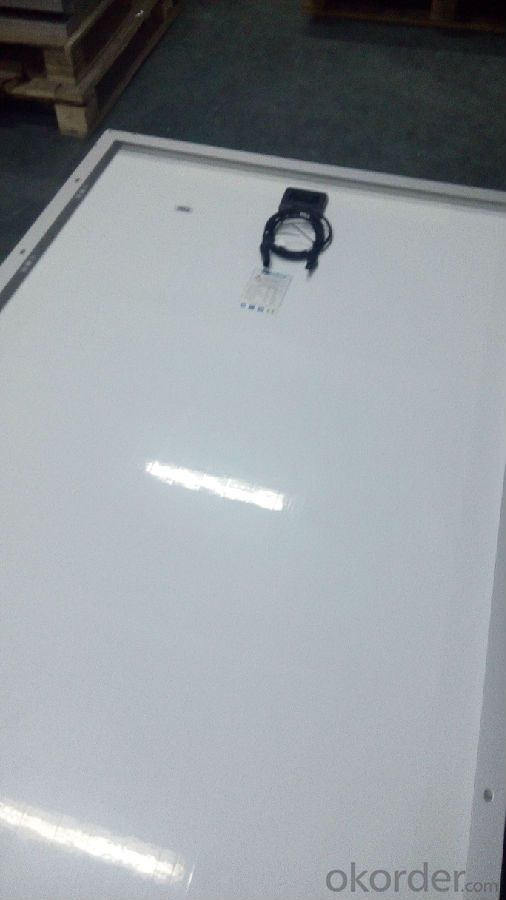
FAQ:What is your warranty system?
For c-Si panel: 25years output warranty for no less than 80% of performance, 10years output warranty for no less than 90% of performance. Free from material and workmanship defects within 5years.
For a-Si panel: 20years output warranty for no less than 80% of performance, 10years output warranty for no less than 90% of performance. Free from material and workmanship defects within 2years.
- Q: Can solar panels be used in combination with other renewable energy sources?
- Yes, solar panels can indeed be used in combination with other renewable energy sources. Many renewable energy systems today incorporate a mix of solar panels, wind turbines, hydropower, and geothermal energy to maximize efficiency and ensure a reliable and sustainable power supply. This combination of different renewable sources allows for a more balanced and consistent energy generation, reducing reliance on a single source and increasing overall system resilience.
- Q: I'm about to buy one but I don't really know which one is best for my home.
- Talk okorder has good info. What state are you in?
- Q: Can solar panels be installed on a telecommunications tower or antenna?
- Yes, solar panels can be installed on a telecommunications tower or antenna. In fact, many telecom companies are increasingly adopting this practice to power their equipment and reduce reliance on grid electricity. Solar panels can be mounted on the tower structure or integrated into the antenna design to generate renewable energy and ensure continuous power supply for telecommunication operations.
- Q: Do solar panels produce noise?
- No, solar panels do not produce noise as they generate electricity without any moving parts.
- Q: I need help?!!
- It needs some battery banks in order to store the energy that will be useful during nighttime if less energy is stored in the batteries due to poor weather condition the effectivity of it is minimized. It has some limitations like you need more batteries in parralell to store more energy from solar cells, and it needs to be fully recharge the next day after it is discharged at night.
- Q: What are the supplies needed in a solar panel field, i know there are the panels. But what about batteries, and converters. Possibly other things, and how many will i need, for a certain amount of panels?
- I am interested also and plan on following up on the information in the next couple of weeks
- Q: Can solar panels be used in areas with high levels of heatwaves?
- Yes, solar panels can be used in areas with high levels of heatwaves. In fact, solar panels can still generate electricity in extreme heat, although their efficiency may decrease slightly due to the temperature increase. However, it's worth noting that high temperatures can also lead to increased energy consumption for cooling, which may offset the benefits of solar energy to some extent. Nevertheless, solar panels remain a viable and sustainable solution for electricity generation in areas with high levels of heatwaves.
- Q: I can't figure out how to charge a Ni Cd (BD 8V Firestorm) battery directly with a solar panel so I've come up with an alternative which might or might not work. I thought I would connect an inverter (I found a nice 400W for $30) to my trucks battery and plug the BD Firestorm battery charger into the inverter. Then I was thinking I could use a 5W solar panel to trickle charge the truck battery and keep it connected after the Ni Cd is charged to ensure the truck battery is topped off. The truck would not be running during this process. Will this solution work? Is there a better solution?
- Your 5W solar panel has to put out about 5 volts or higher to charge a 2 volt battery. 5 watts at 5 volts is only 0.3 amps, which is only enough to handle the internal leakage inside a large battery, plus a bit. If you have a 00 amp-hour battery, that panel would take 300 hours of bright sunlight to charge it. But I do agree that it will keep the truck battery charged as long as it gets sun. Make sure you put a diode in series between the panel and the battery to prevent the battery from discharging through the panel when the sun goes behind a cloud. I'd be worried that if you charged the 8 volt battery frequently, the panel would not be able to replace the lost charge, and your 2 volt battery would wind up discharged. That 8 volt battery is .2 amp-hrs (if I got the correct one). That is 27 watt-hours. Allowing for losses, you car battery will have to deliver over 30 watt hours to charge it. Your solar panel will take over 6 hours of bright sun to make up that difference. That is over 24 hours this time of year. So if you recharged it more than once every 2 days, you will lose charge in the truck battery. .
- Q: So I reckon it's time to install some of these bad boys. it's come to point where electricity providers are charging such extortionate amounts that I can definitely see these reaping huge rewards before long. (Okay I might be exaggerating a little - they are pretty costly themselves).The problem is I've read around that they're only fitted to south facing houses? Why so? Why can't they be installed on the rear side of the roof - the side facing the garden? My house is facing north, so the front door leads north. Could I have solar panels installed on the back? (That's basically my question, with a bit of a rant too lol).Cheers.
- You want the panels facing south because that is where they would get the most sunlight throughout the day. If your front door is facing north, then the back of your house would be facing south, right? So put them up in the back where they are facing south...haha wtf..
- Q: what kind of degree do i need to get in order to know everythin about installing solar panels for houses?
- boots on the roof is one of the classes , around phoenix it it offered at rio salado college, there their so theres a place to start. I have had 2 different people check for me and from what i understand i can install the panels but a licensed electrition has to connect to the meter
Send your message to us
Solar Panels in New York - CNBM Solar Panel Solar Module
- Loading Port:
- Shanghai
- Payment Terms:
- TT or LC
- Min Order Qty:
- 1 PCS
- Supply Capability:
- 100000 PCS/month
OKorder Service Pledge
OKorder Financial Service
Similar products
Hot products
Hot Searches
Related keywords
